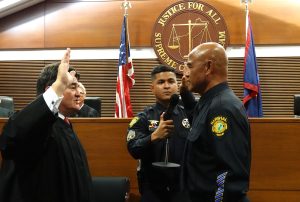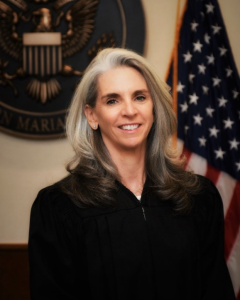Palacios raises concerns with NMFS’ proposed rule on critical coral habitat near infra projects
Gov. Arnold I. Palacios has expressed general concern with the National Marine Fisheries Service’s proposal to designate coral critical habitat in the immediate vicinity of coastal infrastructure projects.
Palacios said the cultural and historical ties that the CNMI island communities have with the surrounding waters and its resources are undisputable, as the dependency on coastal infrastructure is to support people’s quality of life.
He said this includes the CNMI’s commercial harbor facilities and associated channels, small boat marinas, shoreline protection structures, and finally, municipal wastewater outfalls.
The governor raised the issue in a letter last Thursday to Janet Coit, who is the assistant administrator for Fisheries at the National Oceanic and Atmospheric Administration Fisheries Directorate, regarding NMFS’ proposed rule that would designate critical habitat for seven threatened corals in U.S. waters in the Indo-Pacific.
Palacios wanted to personally express a concern he has with NMFS proposing critical habitat adjacent to existing and planned coastal infrastructure projects in the NMI.
The governor said although he cannot speak for other Western Pacific Island leaders, he believes this concern is shared regionally.
Palacios said he is not diminishing the importance of the Endangered Species Act, but the coastal infrastructure is more critical to the island community’s well-being then designating critical habitat around CNMI’s coastal infrastructure is to the recovery of a geographically wide-ranging threatened coral species.
In regard to habitat limitations, Palacios said the NMFS states that Acropora corals “are the most sensitive of all reef-building corals” to sedimentation and poor water quality.
He said using this metric alone, designating critical habitat adjacent to existing or proposed coastal infrastructure features, especially harbors, ship channels, marinas, and wastewater outfalls, would not be regulatorily prudent.
“This is so when you consider the never-ending maintenance activities and infrastructure improvement projects,” the governor said.
Palacios said with a significant area of A. globiceps critical habitat being proposed throughout the Western Pacific, it appears unnecessary and a federal overreach to designate critical habitat adjacent to existing or future coastal infrastructure projects.
He said Acropora globiceps is presently protected by the National Environmental Policy Act, Endangered Species Act section 7consultations, CZM Regulatory Program review and permitting, Section 401 Water Quality Certification, and indirectly by the local Earthmoving and Erosion Control permit.
Palacios said requiring a critical habitat consultation ever time the CNMI wishes to conduct maintenance activities or improve the coastal infrastructure will only further complicate the section 7 consultation process and result in higher costs for implementing conservation/minimization measures that will have few measurable benefits that lead to the recovery of listed species.
The governor said removing specific areas of proposed critical habitat around Tinian Harbor, Rota West Harbor, Rota East Harbor, Agingan Point Waste Water Treatment Plant (WWTP) outfall, and the proposed Pagan Island Harbor and LauLau Bay boat launching ramp is not unreasonable.
He said four sites—Agingan Point WWTP outfall, Rota West Harbor, Rota East Harbor, and Tinian Harbor—contain environmental data from the CNMI Division of Environmental Quality showing the degraded Class A waters surrounding these sites.
Palacios, however, thanked NMFS for addressing earlier concerns on making public meetings more accessible and inclusive by expanding in-person meetings in the CNMI to not only Saipan, but to Rota and Tinian.
The governor commends NMFS in adopting a different approach to designating coral critical habitat from the 2020 Proposed Rule and allowing affected communities the opportunity to submit comments for a revised critical habitat proposal included in a second Proposed Rule.
Palacios believes that this action demonstrates that NMFS can be receptive to Western Pacific concerns and hopes that this cooperation will also extend to the current green sea turtle critical habitat Proposed Rule.

Arnold I. Palacios






